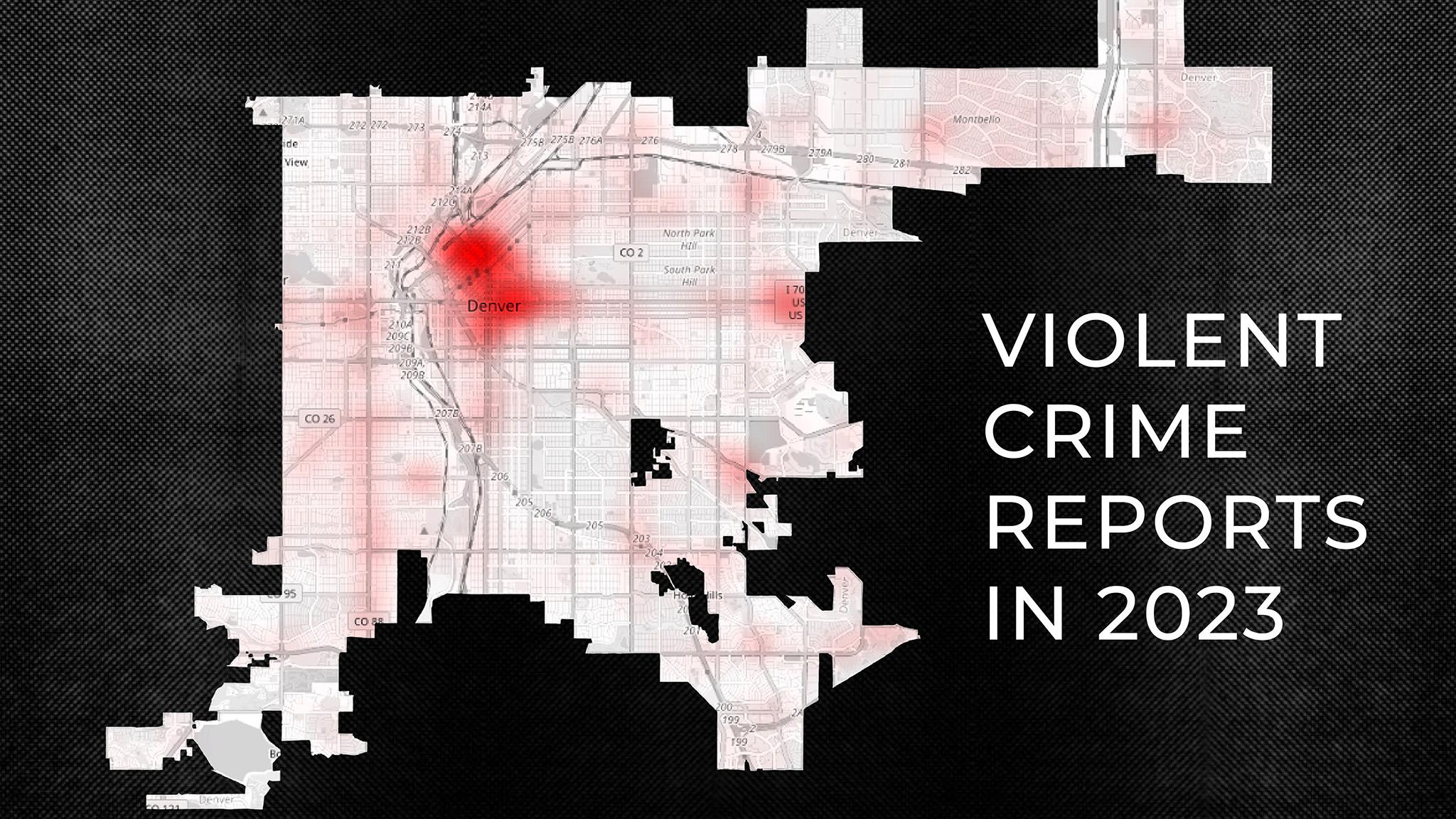Danzel Atkins traveled to Denver looking forward to a break. The father of four ran his own small electrician business in Houston.
"Feels so good to finally be on vacation," he wrote on Facebook on Aug. 16 at 8:43 p.m., as he arrived in Denver.
Five hours later he was dead.
According to investigators, Atkins, a U.S. Army veteran, got into a fight outside a bar around 1 a.m. At some point in the scuffle, Quardre Lamb, 29, allegedly pulled a .45 caliber handgun from what witnesses described as a Louis Vuitton bag and shot Atkins once in the chest.
Paramedics arrived quickly, but his faint pulse was gone within 20 seconds, according to autopsy records. He was 31.
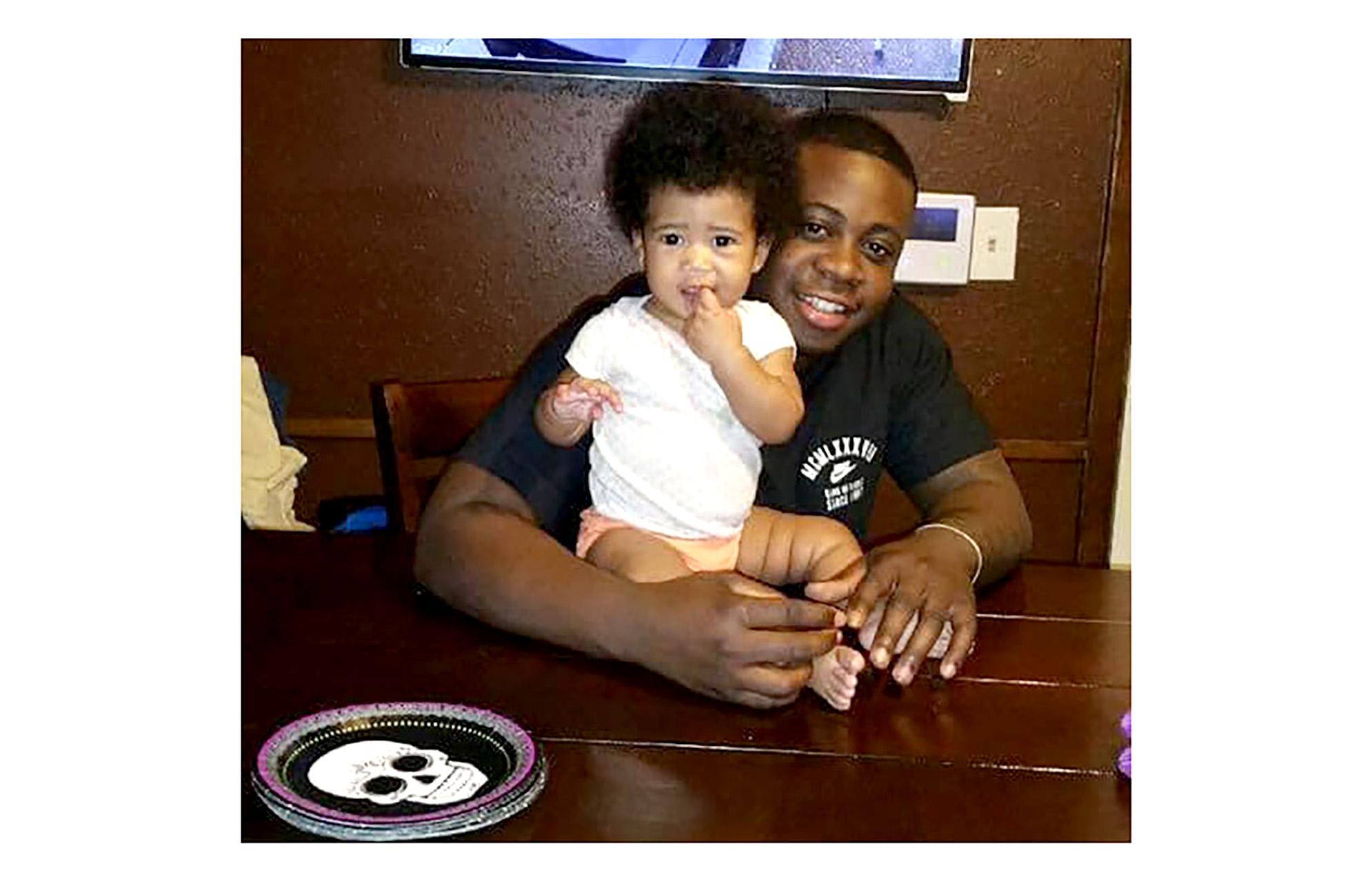
"So talking about him, with it being fresh, it still hurts," said Tyesha Davis, Atkins's sister in-law. "He was a real good person."
Davis said Atkins made friends wherever he went, and was the life of the party. One of his nicknames was 'Happy.' She said it's been painful to see how much his children miss him.
"Oh God, his daughter, she has a TikTok," said Davis. "So him and her, that was her best friend. So now since he's gone, she makes a TikTok every day with pictures of him and her."
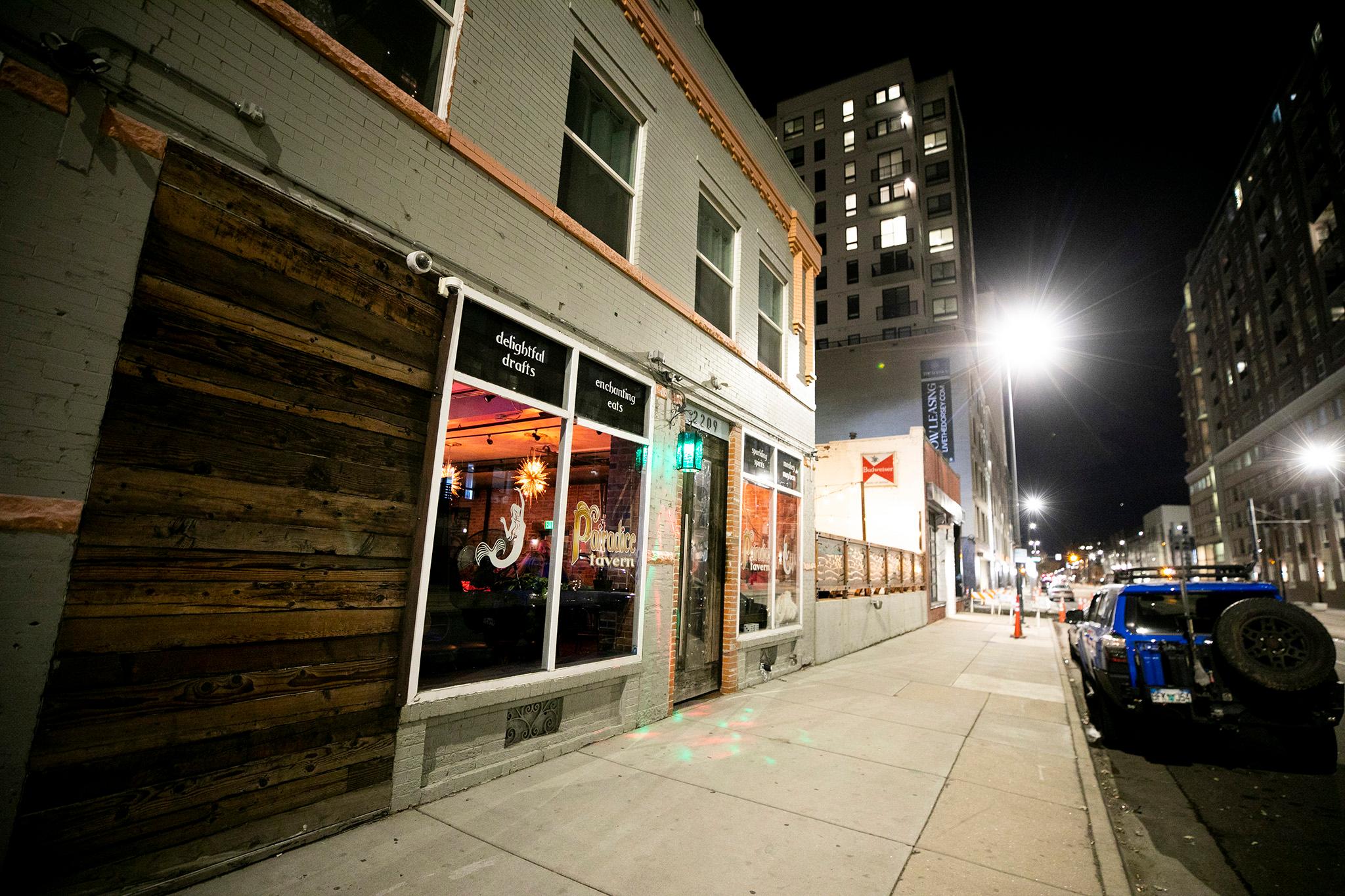
Davis says Atkins came to Denver for vacation, and to visit a buddy he met in the Army. He was supposed to come back for his mother's birthday.
"So he went down there to see his military friend and came back to Houston in a box."
What Atkins didn't know as he embarked for Denver: it's become a significantly more violent city.
Assaults causing serious bodily injury, so-called aggravated assaults, nearly doubled since 2012 -- the fastest rate of growth of any city with more than half a million residents, according to data reported to the FBI. Denver Police report there were 4,790 aggravated assaults last year, up from 2,463 in 2012.
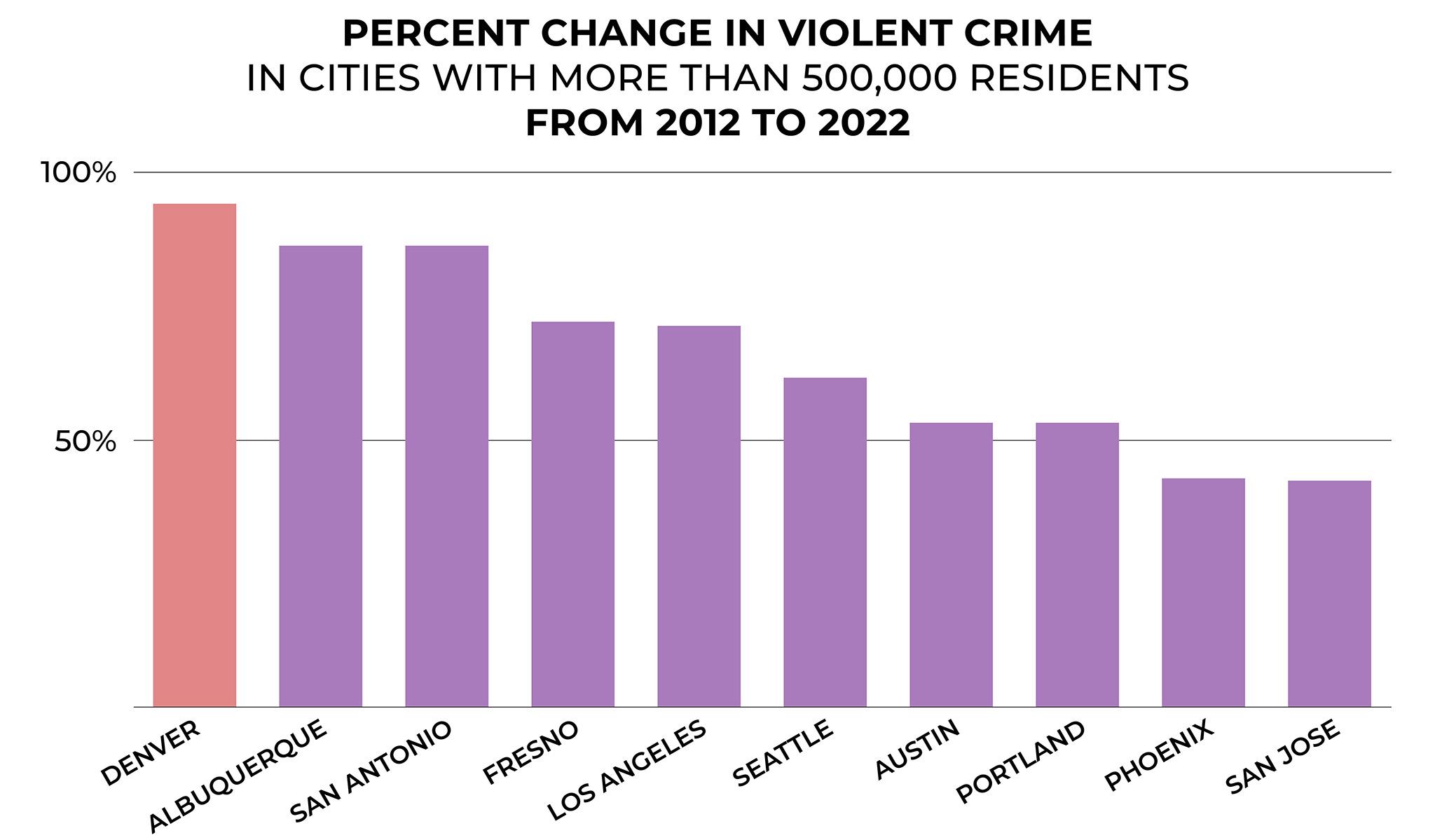
Homicides, meanwhile, have tripled in the last decade. They now occur roughly twice a week, rising from 31 in 2014 to 90 in 2022, according to FBI data.
No one knows for sure why violent crime has risen so quickly in Denver. But no one disputes the role of guns in turning incidents fatal.
There has been a boom in gun sales, as measured by approved background checks. Gun purchases jumped 45% from 2019 to 2020 in Colorado, a larger increase than the national average. Sales in Colorado have fallen since 2020, but 2021 and 2022 are still two of the biggest years for gun sales in state history, according to data from the Colorado Bureau of Investigation.
Back in 2012, guns were the weapon of choice in 56% of homicides, now guns are used in 79% of killings, according to data from CBI. The same pattern holds for aggravated assaults: a firearm was used in 25% of serious assaults in 2012 -- by 2022, a gun was used in 44% of assaults.
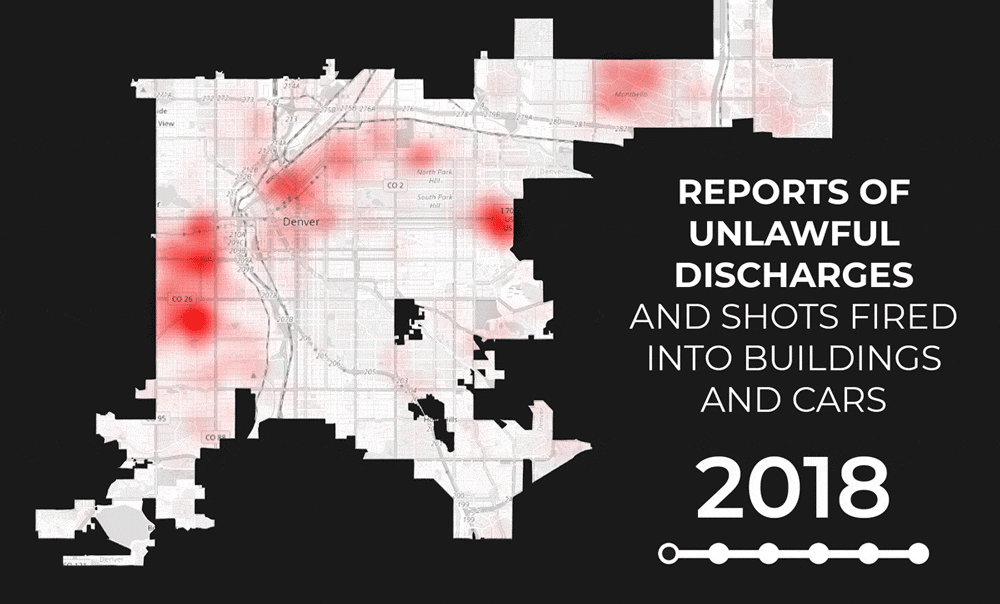
The impact of all those guns in the community is felt in the grim parade of incidents that grab headlines for a while before giving way to yet more shootings.
Last month, six people were shot and three were killed at a Halloween costume party in Montbello.
Earlier this month, seven people were shot, and two were killed, in Park Hill, outside a motorcycle club.
In June, a man opened fire on a police officer. The officer was saved by his bulletproof vest. The officer returned fire, killing the man. That same day there was a second officer involved shooting -- a suspect's bullet again hit an officer's body armor. The officer shot back and wounded the suspect.
Denver Police Chief Ron Thomas said he'd never seen a single day of violence towards officers like that before.
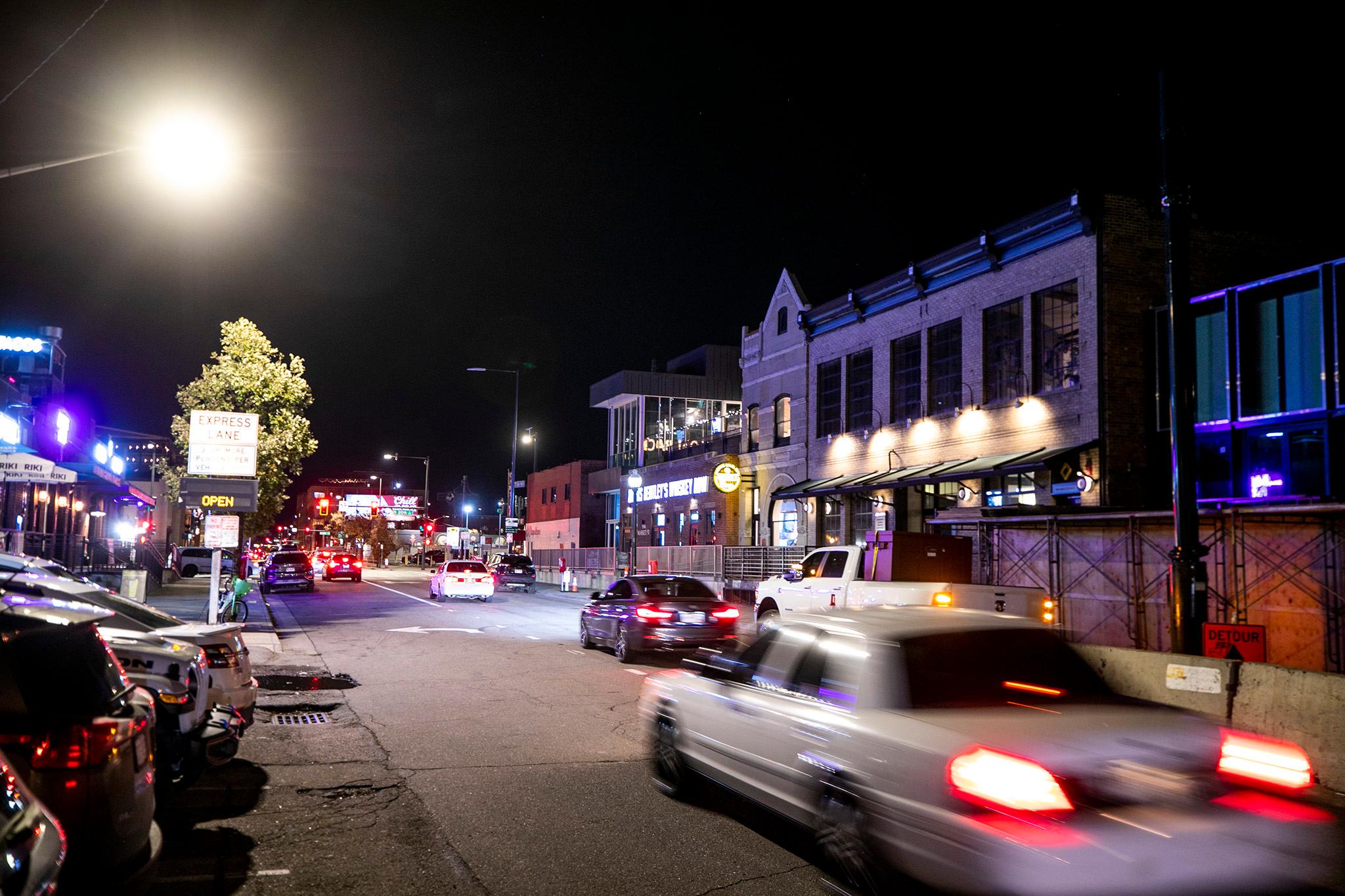
Despite all of this, most people in Denver will never experience violent crime, or a shooting.
Denver has significantly fewer murders than other cities -- more than a dozen large cities have much higher rates. The 90 homicides in Denver last year are still a fraction of the roughly 300 people killed in a year in Baltimore or Detroit, which are both smaller cities.
A review of more than a decade of DPD data, between 2012 and 2023, shows that most violent crime fits a distinct pattern of time and place.
Violent crime is not evenly spread across the city, and two neighborhoods stand out: Five Points and Montbello. Downtown and Capitol Hill suffer high rates of shootings and assaults. Violent crime also plagues neighborhoods to the northeast like Green Valley Ranch, and southwest, around Westwood.
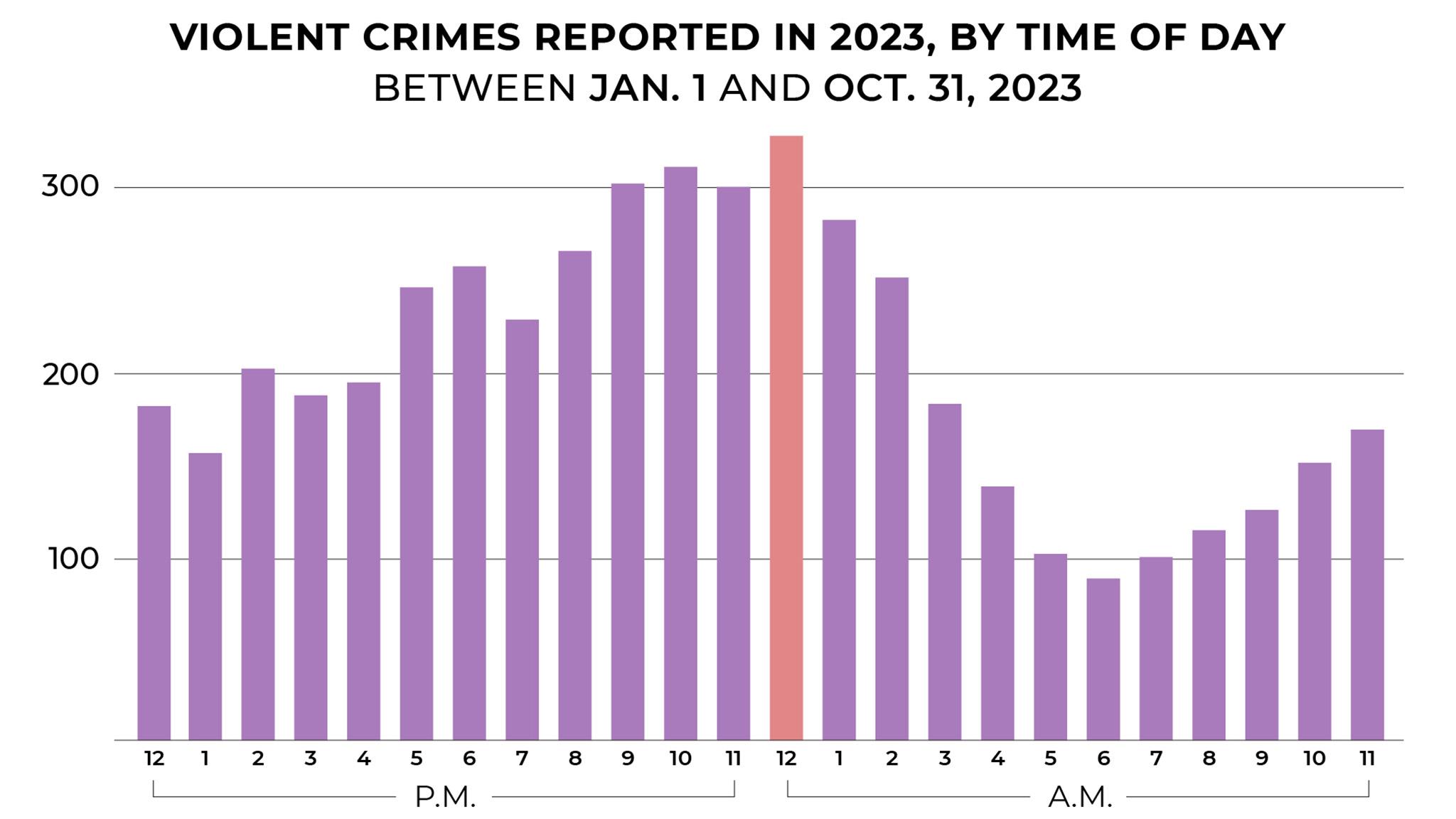
Violent crime tends to rise as the sun sets, peaking after midnight, with most homicides occurring in the 1 a.m. hour. Homicides are far less likely between 5 a.m. and 4 p.m.
Many shooting victims, like Atkins, are Black. According to FBI data, 38% of homicide victims in Denver in the last decade were Black, despite the Black population only making up 9% of the city. This year, for non-fatal shootings, there have been more Black victims than any other race, according to DPD.
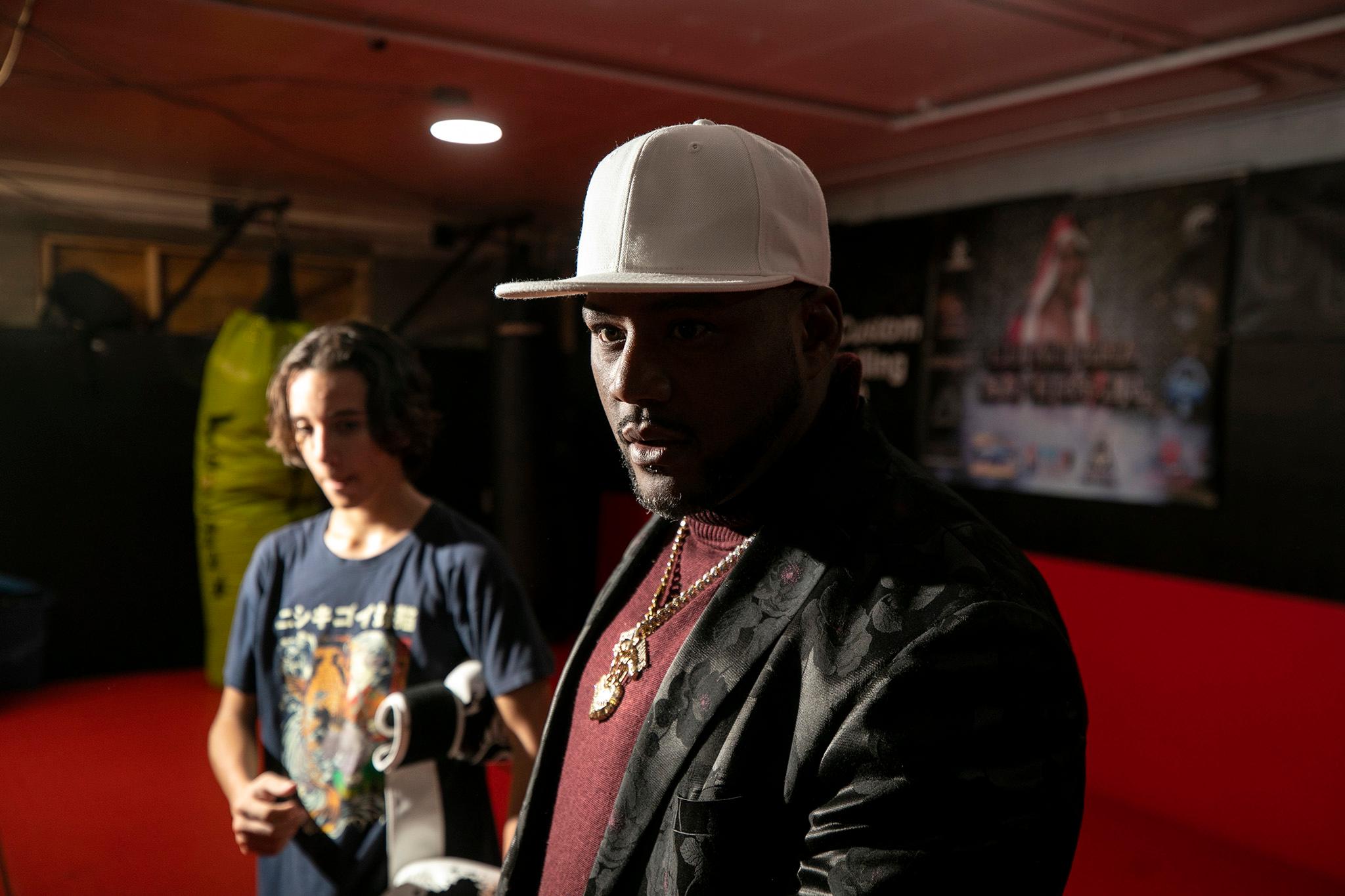
Two days after Aktins was killed, and just six blocks northeast, another shooting claimed the lives of two young Black men, including the son of Lumumba Sayers Sr. a prominent anti-gang activist.
"For the black community," said Sayers, "that's the regular, man. These kids is killing each other."
The alleged shooter in that case, Tyrell Braxton, had been released from federal prison a few months prior when the U.S. Court of Appeals for the 10th Circuit overturned his federal gun possession charge. "That's crazy," said Sayers. "If he'd have still been inside my son would still be alive."
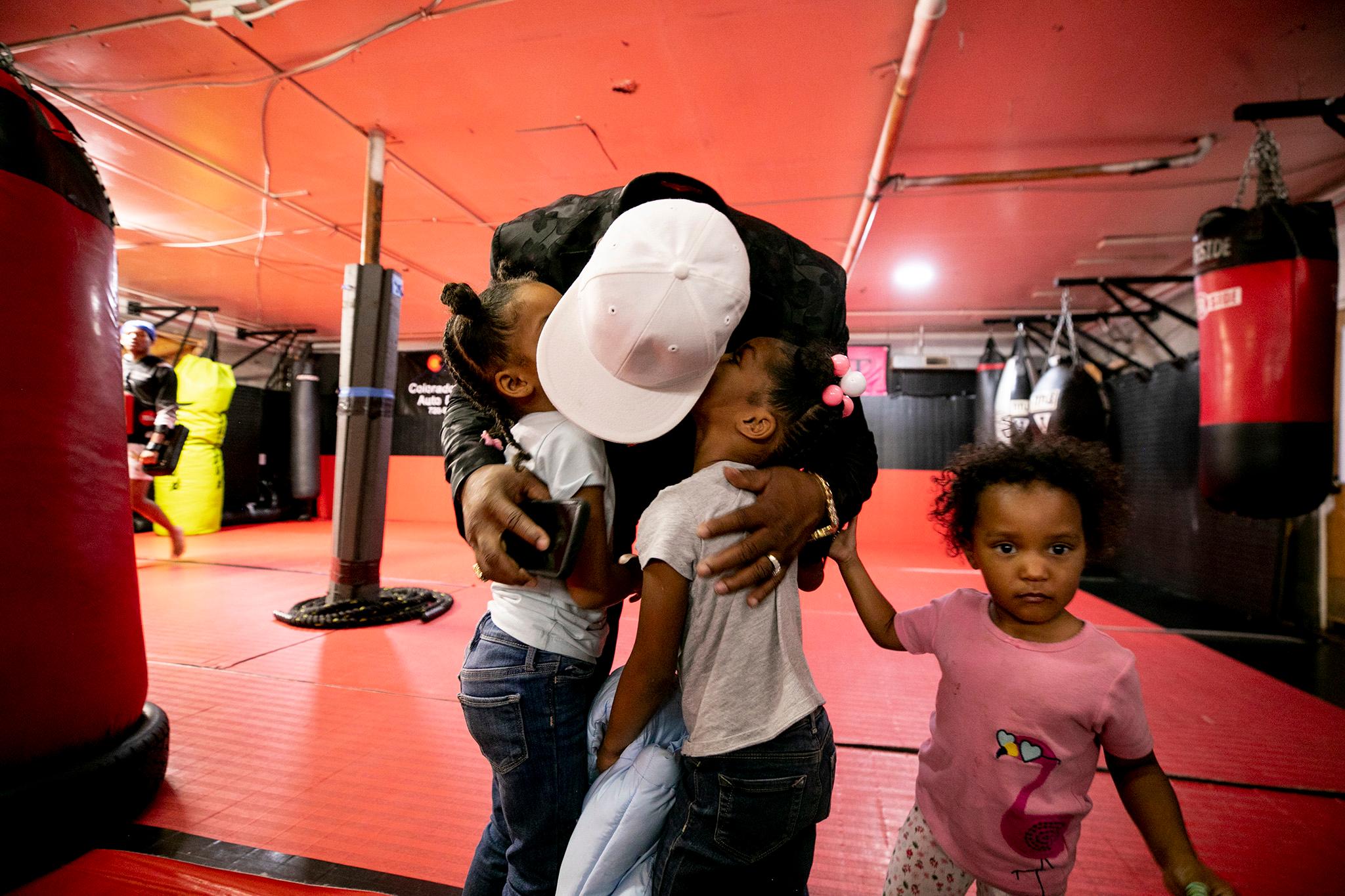
And the violence is rising in Denver as fast as any big city in the country.
Of U.S. cities with more than half a million residents, only Denver's overall violent crime (including aggravated assault, sex assault, robbery and homicide) has risen by more than 90% between 2012 and 2022, according to FBI data.
The FBI cautions against comparing crime in different cities, because these statistics are voluntarily submitted by departments, which may have different or changing definitions for aggravated assault, for instance, a catchall for serious assaults.
Homicides, however, have a consistent definition, and Denver's rate of homicide growth (up 131% since 2012) puts it in the top five for large cities in the U.S. But still behind the growth in cities like Portland (up 370% ) and Albuquerque (up 205% ).
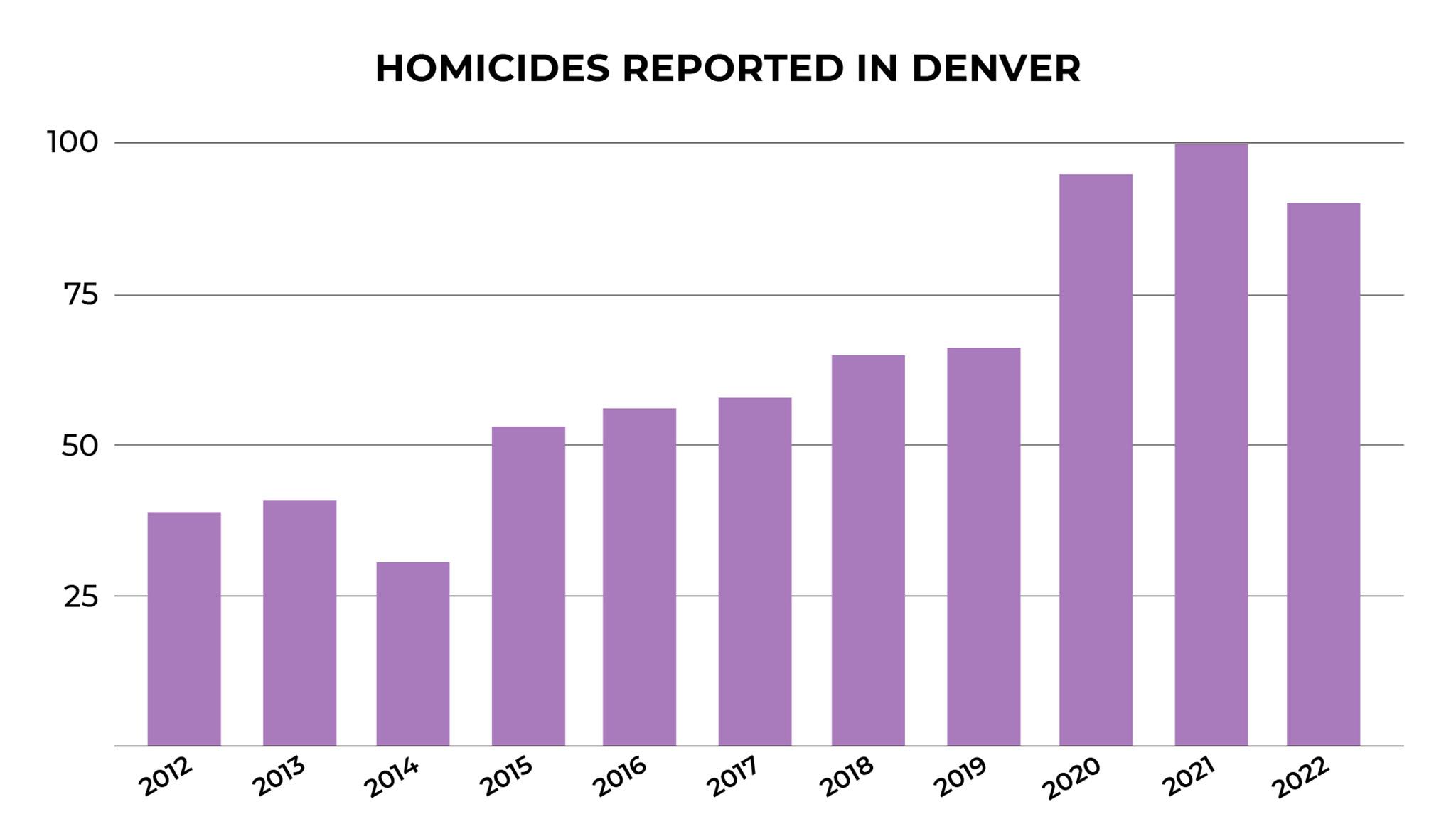
"I think that's a nationwide trend and something that I vowed to address as soon as I became chief," said Denver Police Chief Thomas, who also noted there are signs that violent crime is leveling off in Denver in 2023. Overall violent crime is down 2.6% compared to last year, driven by a large decline in sex assaults. Also the department said non-fatal shootings are down 5% .
"I'm thankful to see that, particularly with our shootings, we've seen shootings going down, we've seen auto theft go down, and so hoping to continue to see a downward trend in those crimes and hopefully some of those issues that I think that caused challenges, community challenges through the COVID period start to level off."
Denver Mayor Mike Johnston would not accommodate multiple requests for an interview over the course of a week, but his office sent a statement saying "gun violence is a serious issue" and that "we are working closely with DPD to reduce incidents of gun violence."
The statement noted there has been progress this year: aggravated assaults where a gun was fired have declined 15% in 2023. And the office was focused on preventative measures for youth "that helps them find their passion before they get involved in negative peer groups."
It's not yet clear, however, that violence is substantially falling in the city. While there are some numbers that indicate that shootings have declined -- total aggravated assaults and homicides are about equal to this time last year.
The police department has made far more progress on property crimes, which are down 11% over last year, according to data from DPD. Auto theft, while still historically high, has declined 20% this year. Theft of items from motor vehicles is down 7% so far this year.
The proliferation of guns has made bending the curve on deadly violence harder. Denver recovered 2,056 crime guns, according to data from the Bureau of Alcohol, Tobacco, Firearms and Explosives. That's double the 1,021 crime guns recovered in 2014.
"What we are seeing is more armed individuals," said Thomas.
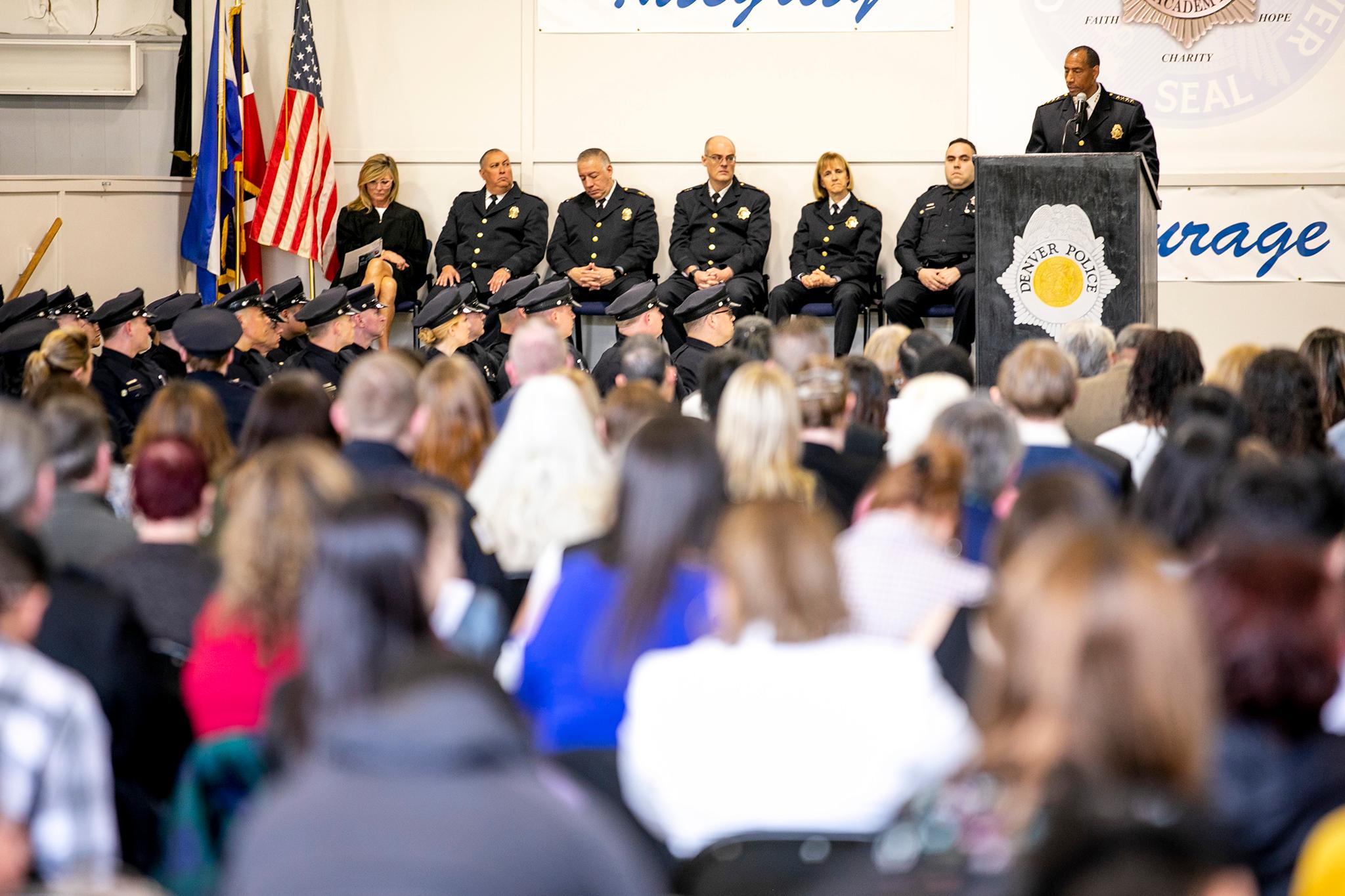
About 1.5 million firearms have been purchased legally since the pandemic began, according to the number of approved background checks by CBI. That's roughly 300,000 more guns than would have been purchased had there not been a pandemic-related surge in buying.
Most guns purchased in Colorado won't be used in a crime, but there are indications that guns purchased during the pandemic surge are already resulting in violence. The average time it takes for a legally purchased gun to be used in a crime in Colorado has decreased sharply since 2014, from 9.17 years to 6.11 years, according to data from ATF.
While a more conservative U.S. Supreme Court has tied the hands of states, Colorado lawmakers still passed a number of measures this year, including a three-day waiting period when purchasing a firearm. That law was allowed to go into effect while a legal challenge plays out.
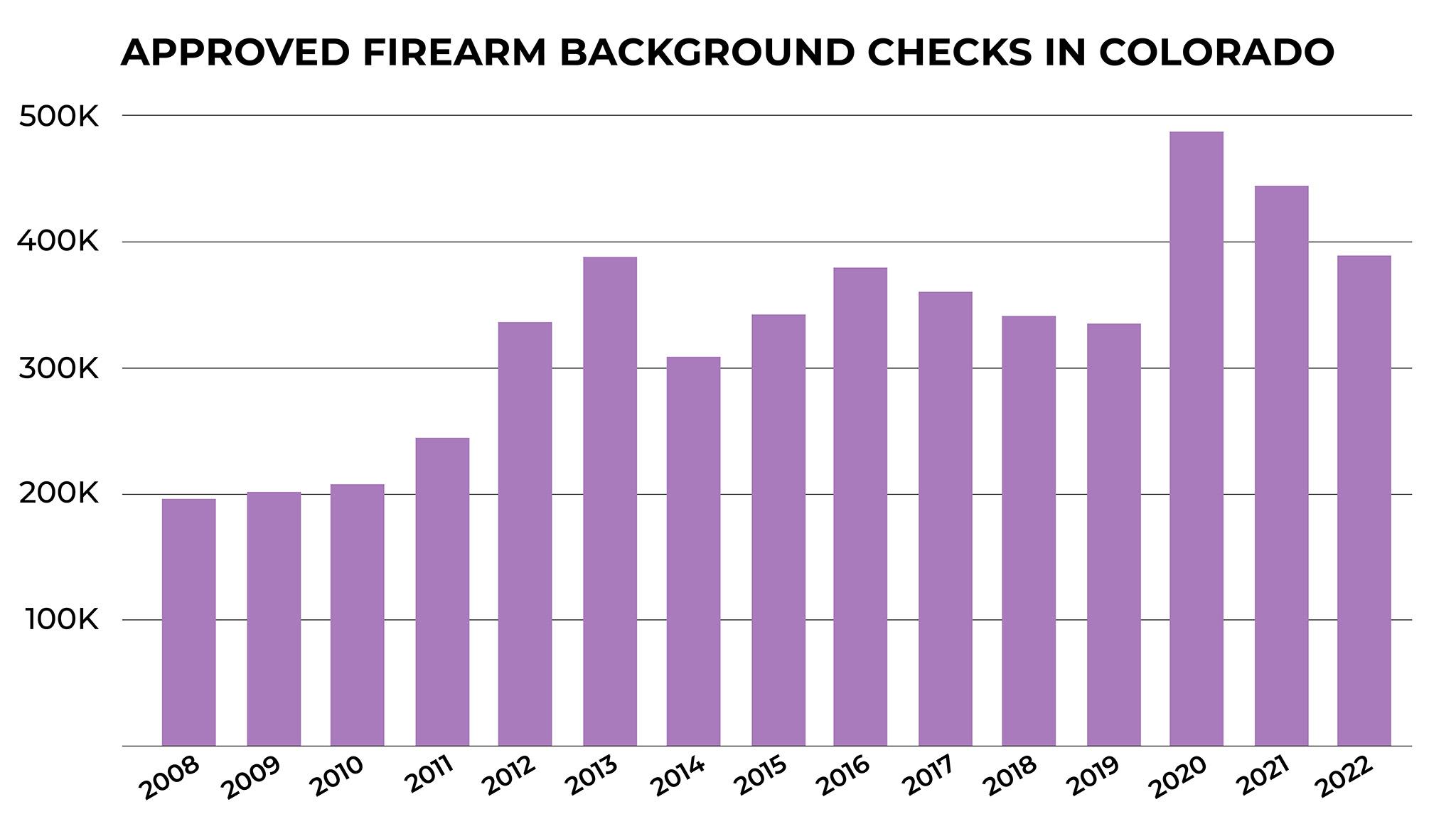
Still, the binge of gun buying since 2020 means there's probably a certain amount of gun violence baked into future years.
"I think that that's a fair thing to think about," said Dr. Emmy Betz, a professor of emergency medicine and director of the Firearm Injury Prevention Initiative at the CU Anschutz campus.
Betz said the presence of guns alone is enough to turn some incidents fatal, whether it's a case of domestic violence or a bar fight. "So the guns didn't cause the event to happen, but they made it more lethal. And I think that's concerning about just having more guns in society, particularly if they're not being stored securely," said Betz.
Denver District Attorney Beth McCann said she was encouraged that violent crime was showing small signs of slowing down this year, as the effects of the pandemic wane.
"The social structures that people rely on were just non-existent. Rec centers, schools, libraries, churches, all those social network systems were gone," said McCann, who said she was especially concerned about kids, who haven't learned how to handle conflict in a healthy way.
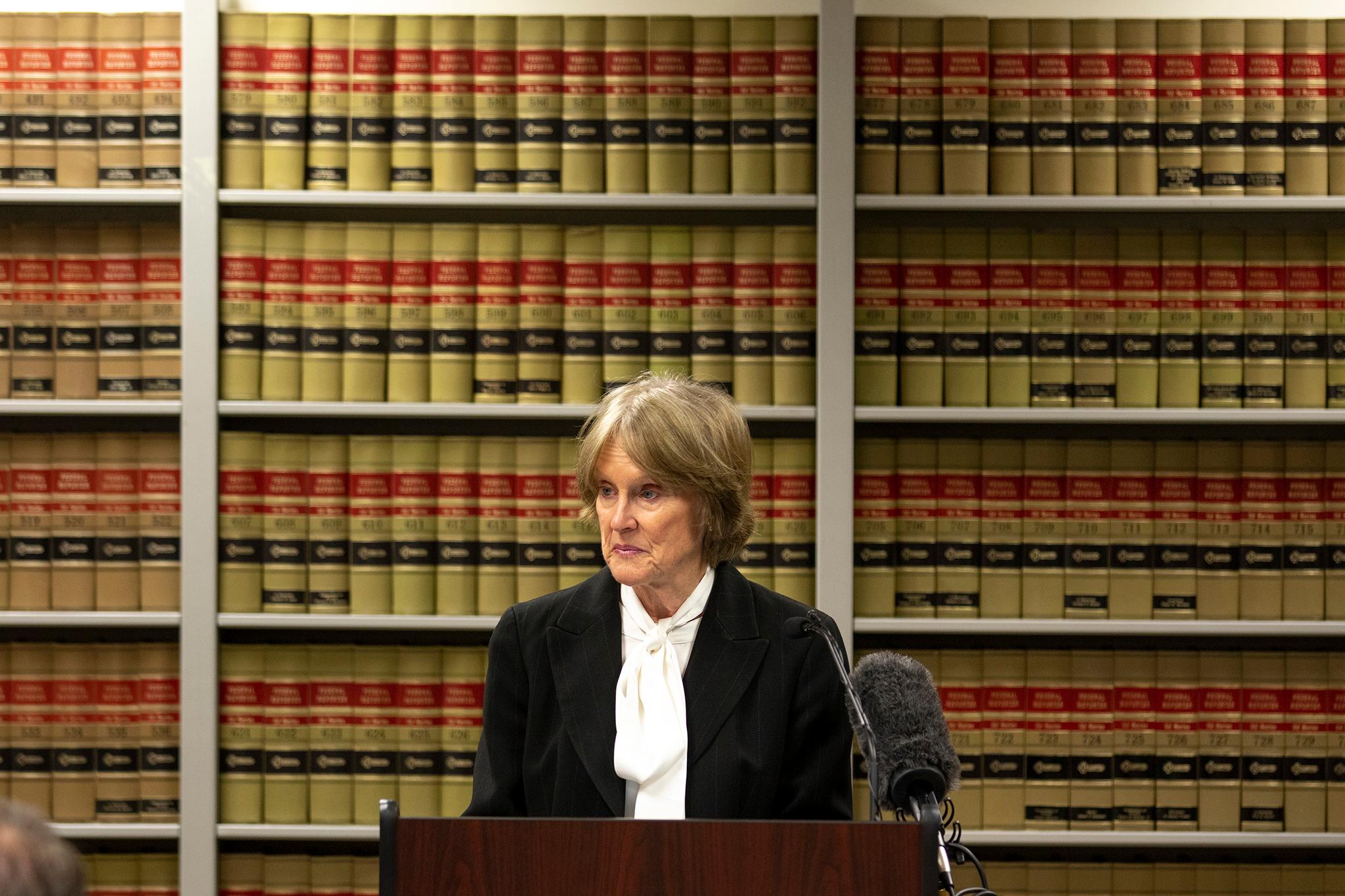
No place was spared pandemic social disruptions, but the crime increases in Colorado are larger than many other places. Violent crime is up along Denver's borders, in Aurora, Lakewood, and Westminster. Statewide, the 2022 violent crime rate was up for the third straight year, according to FBI data -- at the same time that violent crime is falling nationally, down to pre-pandemic levels.
Recognizing the unique local nature of the problem, McCann created a program within the District Attorney's office to intervene early when kids are found in possession of a firearm, but haven't used the gun yet. She says her office also focuses on prosecuting felons who are barred from being in possession of a firearm.
"Personally, I also think the gun proliferation is just terrifying," said McCann.
All these efforts have yet to substantially bend the curve on deadly shootings in Denver, leaving victim's families searching for answers and grieving, just as the holidays approach.
Danzel Atkins's family in Houston has been told that his alleged killer was not legally allowed to be in possession of a gun, due to a past felony arrest. That didn't stop the shooting from happening -- a sequence of events that all too common in recent years in Denver. An argument that turned deadly due to the presence of a gun.
"Just let the people in Denver know that man there, that was a good man," said Davis, Atkins's sister in-law. "And God does everything for a reason, but I don't think God had planned that, for that day, because it shouldn't have happened. It shouldn't have never happened."
Kevin Beaty contributed data analysis and graphics to this report.

